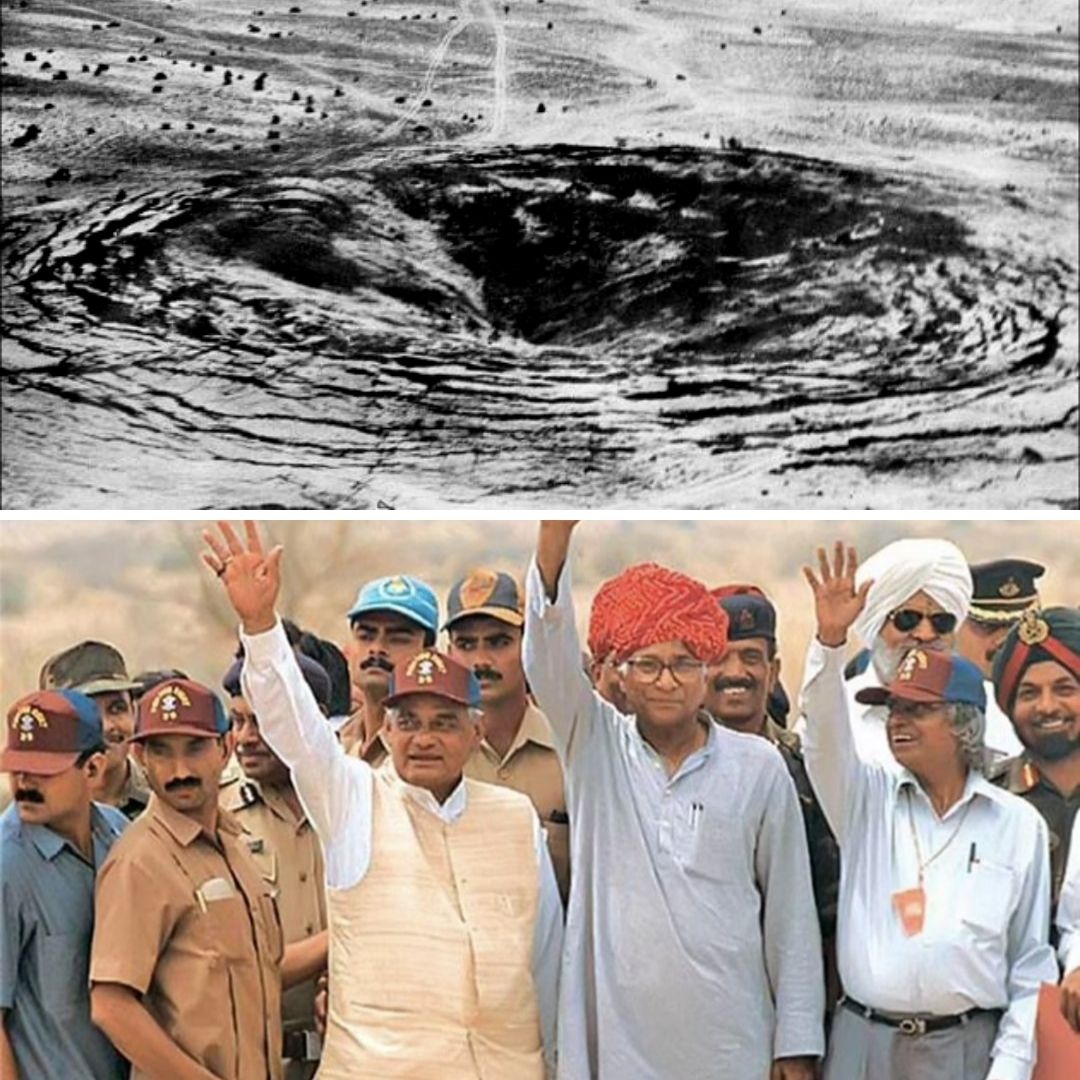Amid The Speculation Of Nuclear War, Know About India's Journey Of Being A Nuclear-Powered Nation
Writer: Varnika Srivastava
She is an upcoming millennial journalist, gushing in the 21st century to bring the authentic piece of information to the citizens.
Delhi, 28 Feb 2022 1:22 PM GMT
Editor : Shiva Chaudhary |
A post-graduate in Journalism and Mass Communication with relevant skills, specialising in content editing & writing. I believe in the precise dissemination of information based on facts to the public.
Creatives : Varnika Srivastava
She is an upcoming millennial journalist, gushing in the 21st century to bring the authentic piece of information to the citizens.
Currently, Russia's invasion of Ukraine leads to horrifying conditions. Still, as promised by the trilateral treaty of 1994, the US will not fulfil the promise made in the treaty, as it will not send its troops to Ukraine.
The operation 'Smiling Buddha' bought an extravagant smile to Indians on May 18, 1974, as India got recognition as a nuclear-powered nation around the globe. The Indian Scientist accomplished a successful and peaceful mission in the deserts of Pokhran village in Rajasthan. India nearly took a couple of years to prepare for this mission.
Former Prime Minister Indira Gandhi authorized scientists at the Bhabha Atomic Research Centre (BARC) to detonate an indigenously designed nuclear device in September 1972.
About Smiling Buddha
The code name for India's first successful nuclear bomb test was 'Smiling Buddha' (MEA designation: Pokhran-I); with the test, India evolved as the world's sixth nuclear power, following the United States, the Soviet Union (now Russia), the United Kingdom, France, and China in successfully testing a nuclear weapon.
The code name 'Smiling Buddha' of the successful mission was chosen because the test was conducted on Buddha Purnima of 1974. After the mission's execution, Raja Ramanna, the director of India's premier nuclear research institute BARC, conveyed "The Buddha has finally smiled" to Indira Gandhi.
The highlight of the test was that India had managed to avoid detection by the US and other intelligence agencies during the execution. Still, the actual yield of the device detonated at Pokhran is debated, and it is believed that the actual outcome was around 8-12 Kilotons of TNT.
The Saga & Aftermath Included
India fastened its preparation in 1944 when it achieved its independence from the British empire. India's first PM, Jawaharlal Nehru, stated that "We must develop this atomic energy quite apart from war – indeed I think we must develop it for the purpose of using it for peaceful purposes. ... Of course, if we are compelled as a nation to use it for other purposes, possibly no pious sentiments of any of us will stop the nation from using it that way," quoted India the Nation.
After that, when Indira Gandhi became PMin 1967, she escalated the nuclear programme with vitality. Chemical engineer Homi Sethna was instrumental in developing weapon-grade plutonium, while Ramanna designed and manufactured the entire nuclear device. Due to the project's sensitivity, India's first nuclear bomb did not employ more than 75 scientists. The weapons programme was redirected to produce plutonium rather than uranium.
Indira Gandhi granted the BARC to manufacture and test a nuclear device on September 7, 1972, near the height of her postwar popularity, as the trials were carried out under the vigilant eyes of the Indian political supervision, with civilian scientists assisting the Indian Army, the mission was an executed successfully. Still, the results internationally of the nuclear trial were not a favourable one.
India had been subjected to many sanctions from countries such as the United States, which warned that such tests could lead to nuclear proliferation.
Russia-Ukraine Crisis
After the Soviet Union collapsed, the trilateral process passed in January 1994 that bound the United States, Ukraine, and Russia, which asked Ukraine to transfer the nuclear warheads to Russia for destruction, as Ukraine agreed.
In return, Ukraine received security guarantees from the US, Russia, and the UK; compensation for the economic value of the highly enriched uranium in the warheads. And assistance from the US in dismantling the missiles, missile silos, bombers, and nuclear infrastructure on its territory.
But, as of the current situation, Russia's invasion of Ukraine leads to horrifying conditions in Ukraine. Still, as promised by the trilateral treaty, the US will not fulfil the promise made in the treaty, as the US will not send its troops to Ukraine.
Also Read: Raman Effect! Here's How CV Raman Discovered 'Why Sea Is Blue'
 All section
All section















